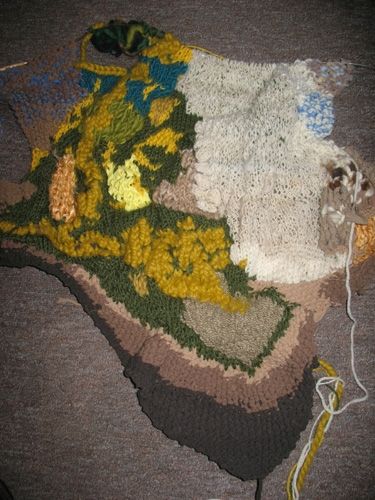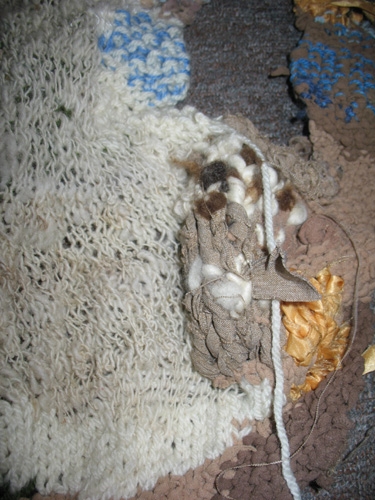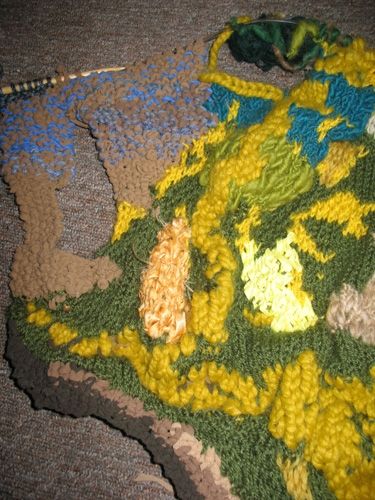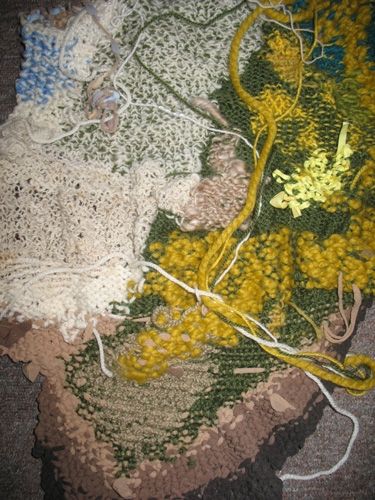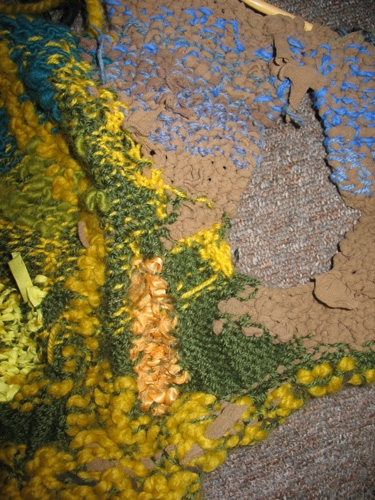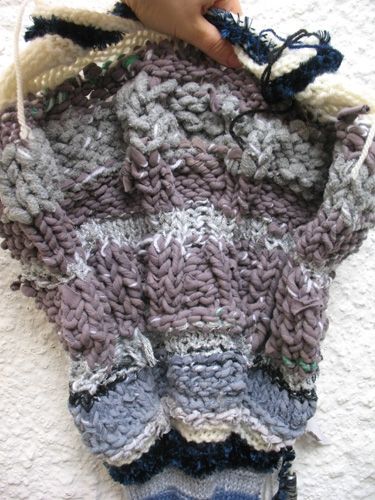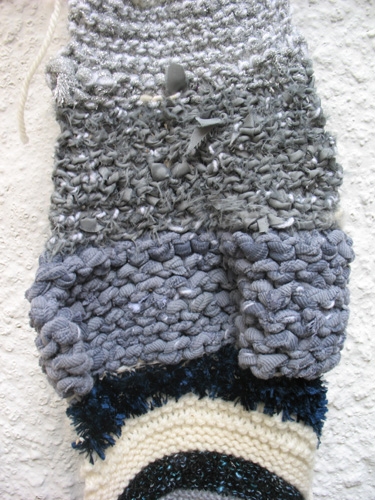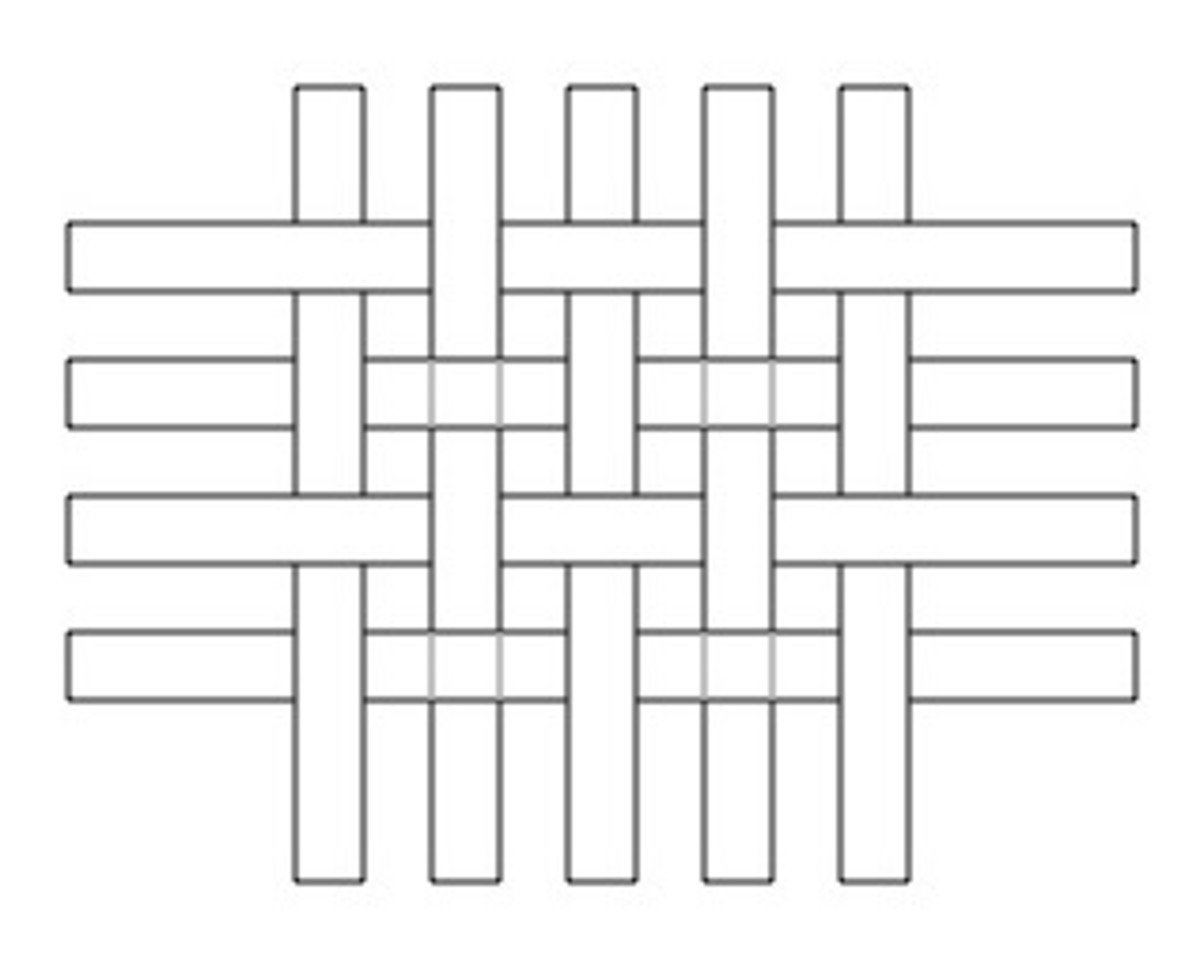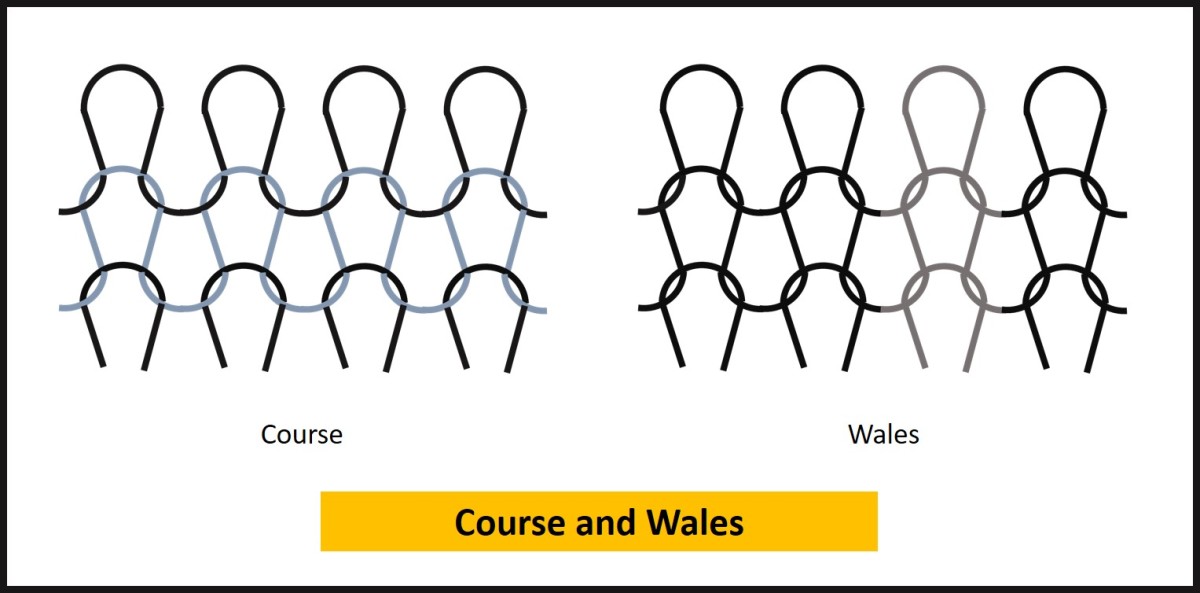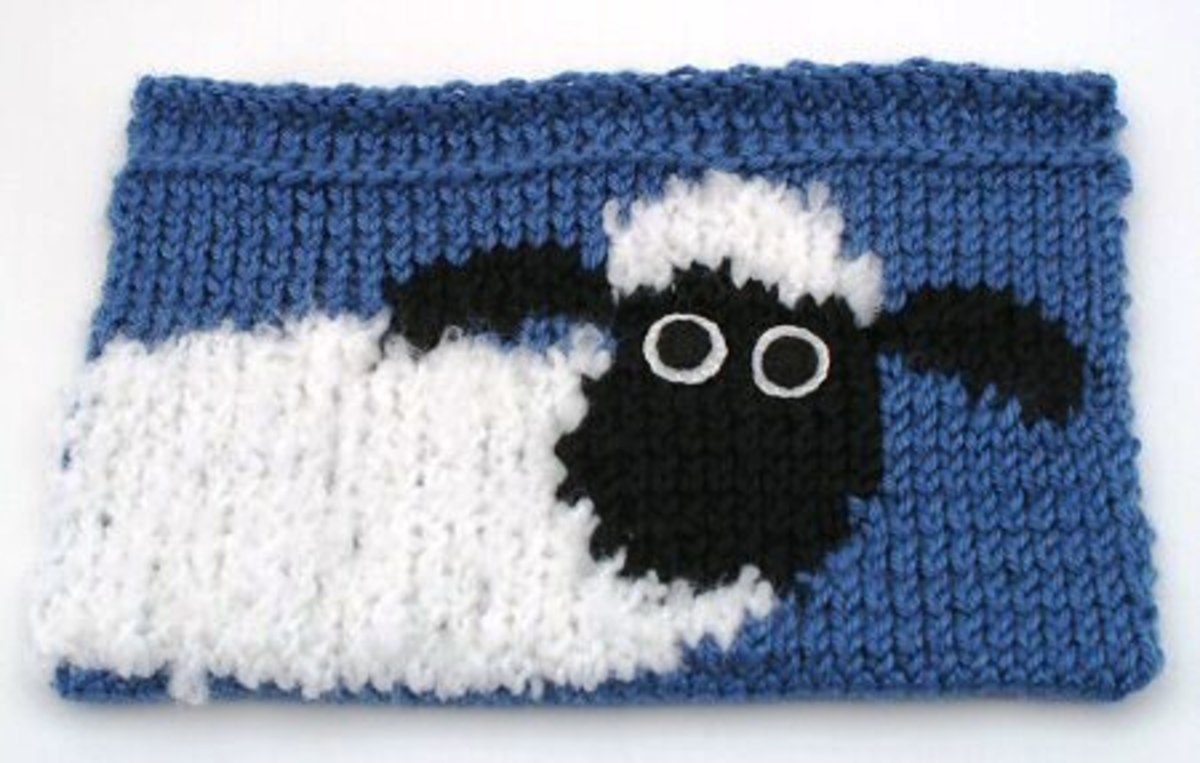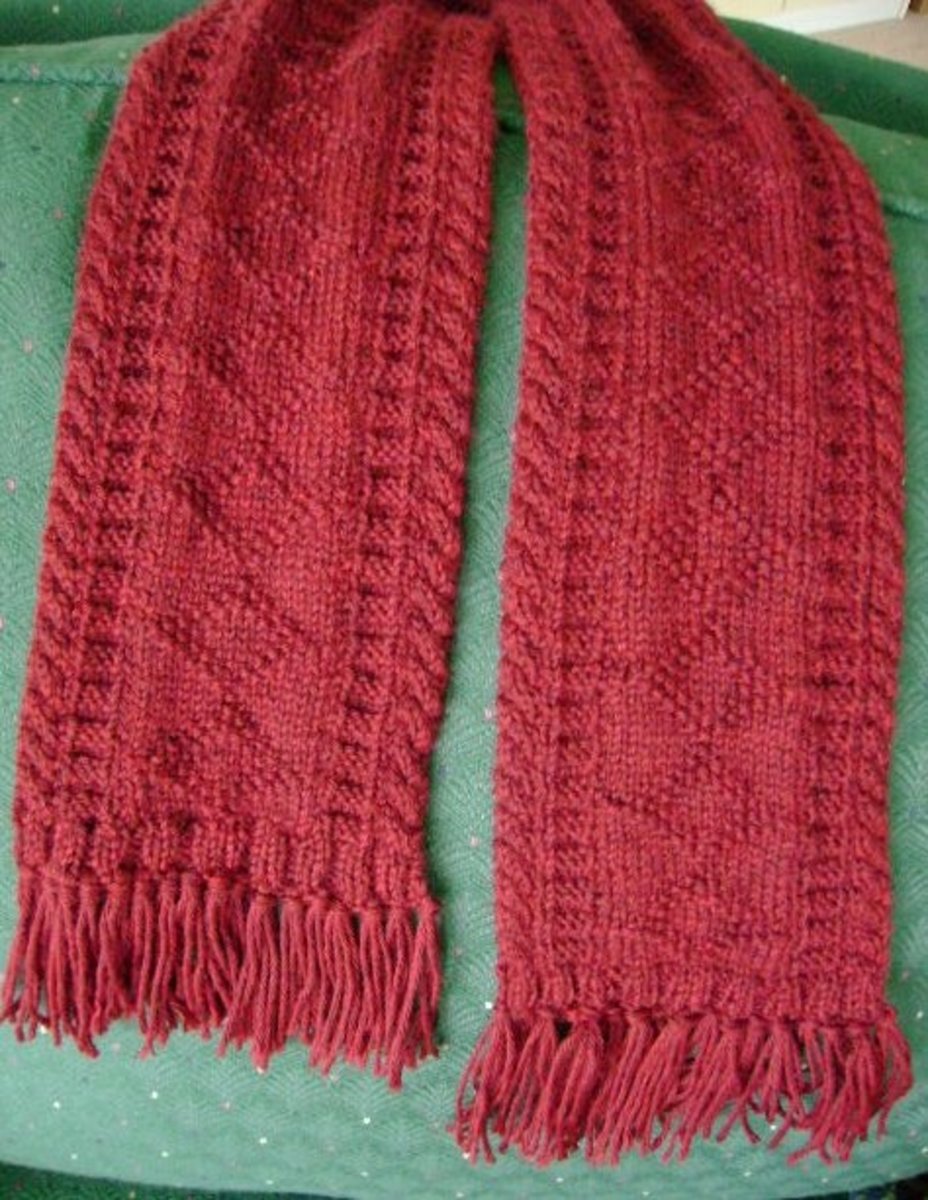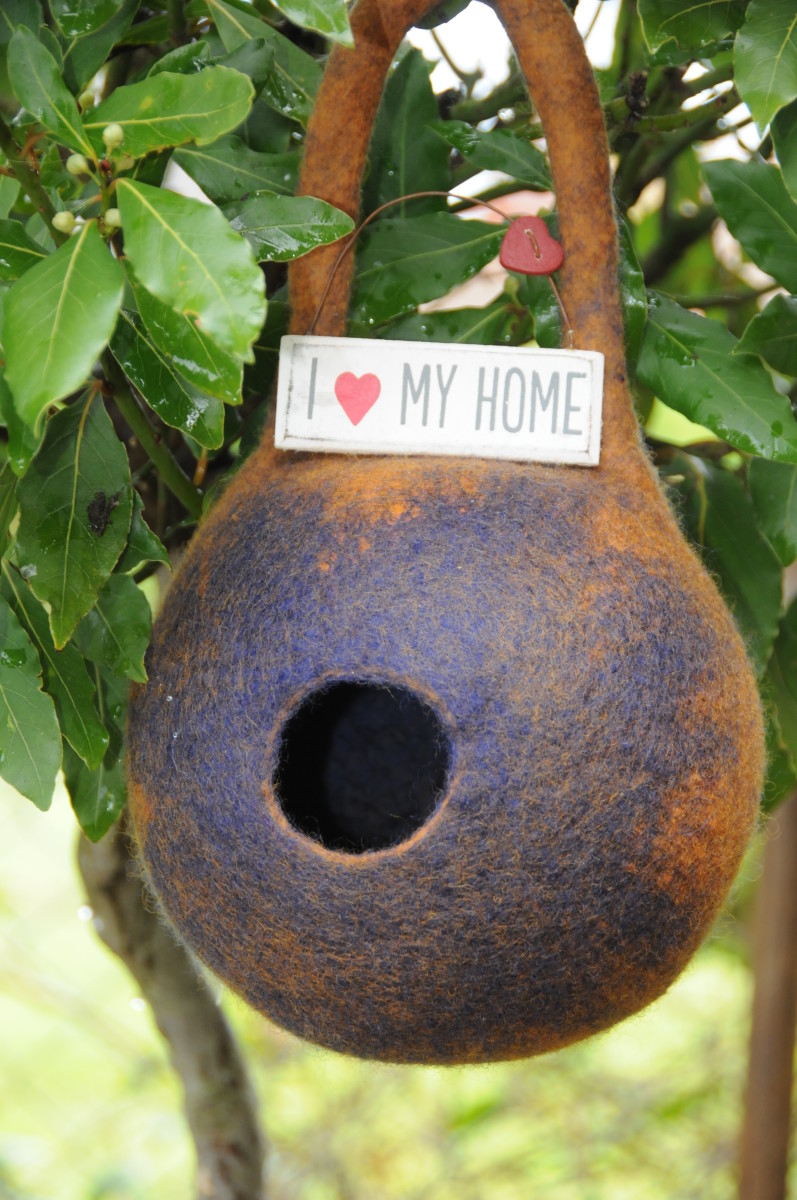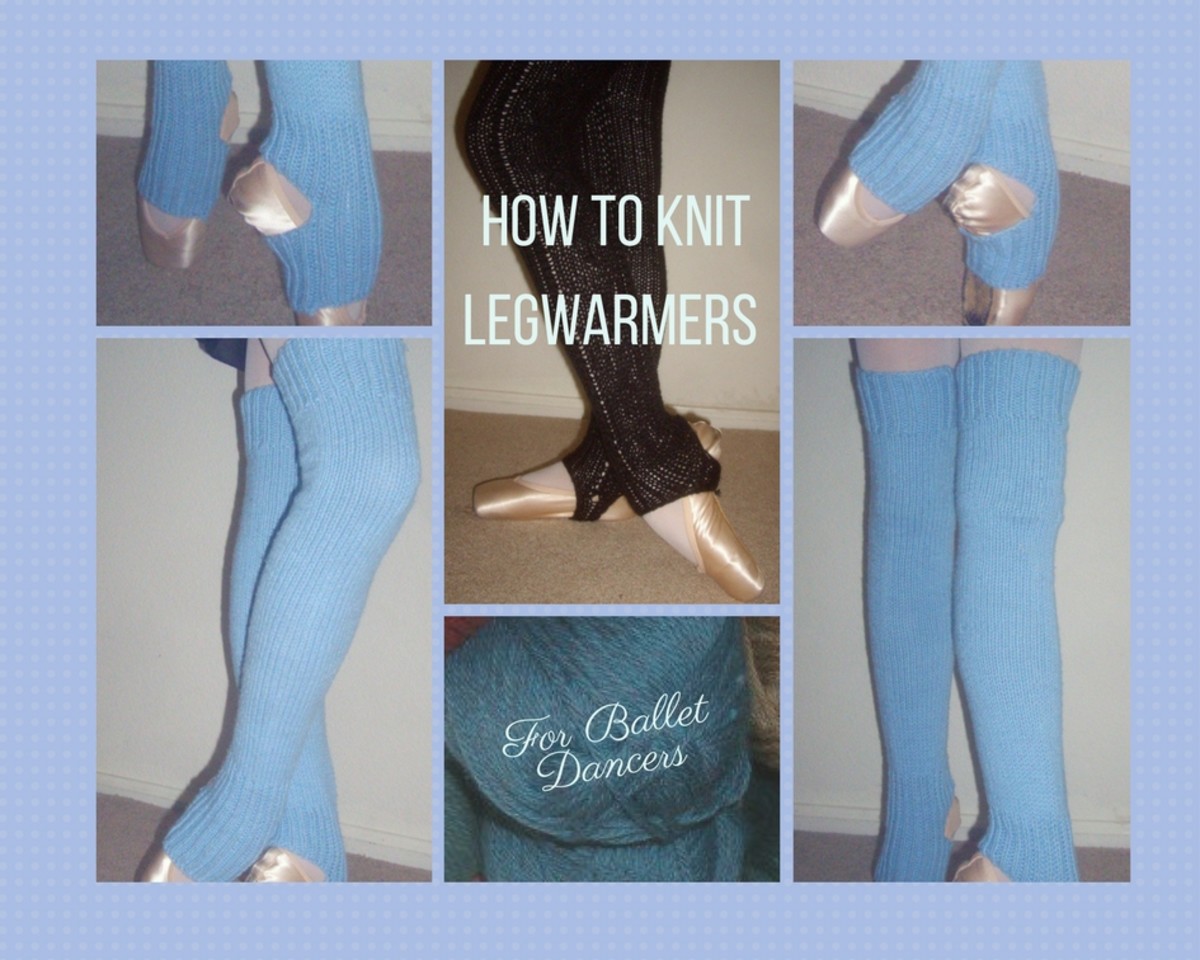Knitting with Fabric
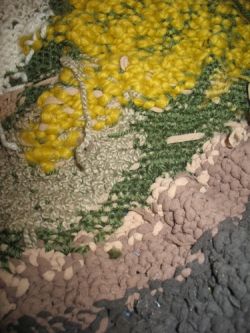
Jazz Up Your Knitting with Fabrics!
Recently I've become obsessed with knitting.
I started out working with the nasty acrylic yarns because they're cheap and because I didn't know much about yarn.
As I started exploring knitting I realised I wanted to move away from acrylics - my knitted pieces didn't turn out as nice as other people's and I knew it was because my yarn was rubbish.
Then I discovered that I could mix and match yarns - use a few natural wool yarns and mix them with the acrylics.
I primarily work with fabrics so I became really excited to learn that I could knit with fabric strips too and that those fabrics would look great when mixed with cheap acrylics!
Recycling Tights/Pantihose
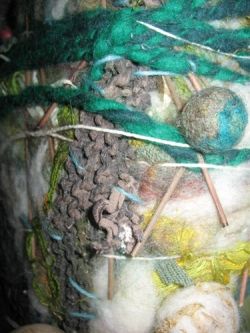
Introduction to Knitting with Tights
I'm British, so whenever I say "tights" I mean "pantyhose". Thought I'd get that cleared up now so I don't have to keep correcting myself!
I can't remember why or when I thought knitting with tights would be a good idea but it's the perfect place to start if you want to begin to knit with fabric. The nylon is so stretchy that it easily lends itself to knitting.
I know I'd tried knitting with strips of plastic a couple of times before so I did have a habit of knitting with materials other than yarn.
My family and friends are always giving me bags of stuff to use in my craftwork so I always have a big bag of tights hanging around.
Anyway, one day I decided to cut a pair of tights into one long strip and knit them up.
The images opposite and below show details of one of my felted "cocoons" which feature strips of knitted melted tights.
I always thought this texture would be great for portraying a ploughed field or other churned-up ground.
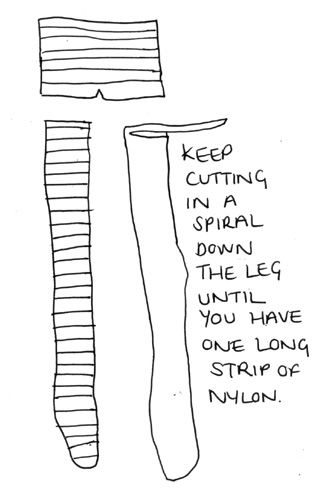
How I Cut Tights into Strips
It's not a difficult process.
I usually cut the legs off and start cutting those in a spiral, going around and around the leg until I reach the foot. If you want a smooth piece to knit with then cut off the foot and discard it and also discuss the waist/gusset part. I don't mind adding a bit of bumpy texture into my knitting so I usually leave the toe on - trying to cut it to the same width - and then cut around the waist part making that into a big strip too. You'll need to knot the pieces all together.
The width of your strip depends on what effect you want.
I'm currently knitting with size 6.5 needles and I wanted a fairly smooth look to my knitting so I made sure my strips was fairly skinny - cutting it to about 1cm wide (that's a little smaller than half an inch).
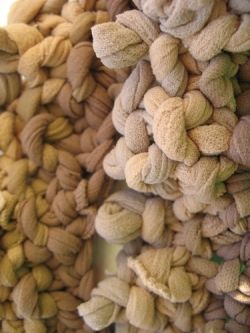
Mixing Colours
Whilst perusing my bag of discarded, laddered tights I discovered that I wasn't limited to just one shade.
I pulled out a bunch of different-colored tights and started knitting the darkest one first (check out the image below).
I used seed/moss stitch to experiment with color - this way I knew I wouldn't get a solid and obvious stripey line but a lovely gradated effect.
Tights can come in any colour or pattern you like these days so you're not limited to blacks, greys and browns. I've got a pair of blue tights that I'm looking forward to knitting into a project soon.
In the image below you can see where I've started knitting with a strip of satin.
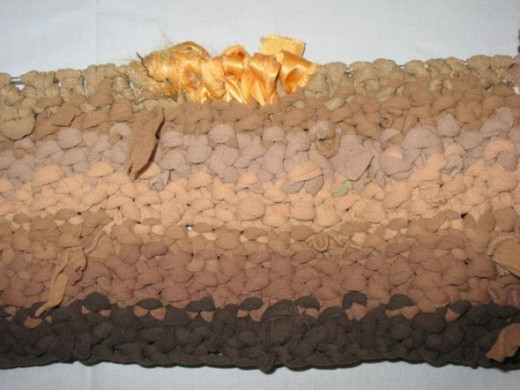
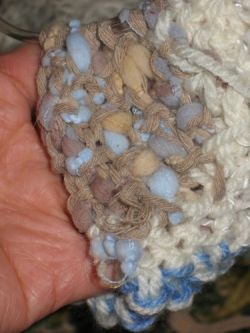
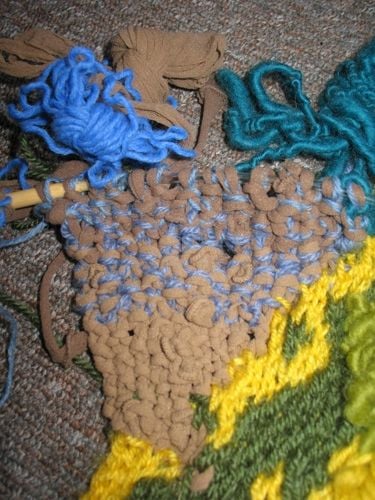





Mixing Yarn and Tights
So what do you do if you can only get your hands on certain colors and you want to add some variation into your knitting?
I decided I would try adding in little scraps of yarn. I tied the yarn onto the nylon strip and knit both pieces together (check out the image below).
I wanted to emulate this fancy yarn I had (shown opposite).
Also think about other possibilities you have with tights - what else could you knot or stitch onto them? Could you feed the strips through beads? Could you stuff tubes of nylon with fiber and knit those?

Spinning Fabric Yarn
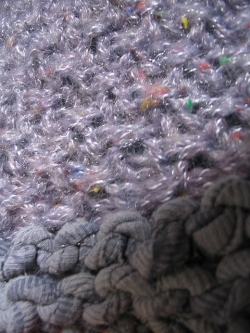
A few years ago I wanted to knit this metallic-looking wall hanging. I wanted it to look like machinery or a robot. The only problem was that I didn't have any cool metallic yarn. I only had crummy black, white and grey acrylic.
I decided I would have to spin my own yarn.
Well, it didn't end up looking enough like metal for my liking but it was an interesting experience.
The fabric yarn shown opposite and below was made by spinning a long strip of a shredded grey t-shirt over a core of cheap acrylic yarn.
The resulting yarn was extremely thick - like cable but it has interesting possibilities for sculpting with knitting fabric.
Stretchy t-shirt fabric is just as easily knit straight from strips as it has a good amount of stretch in it.
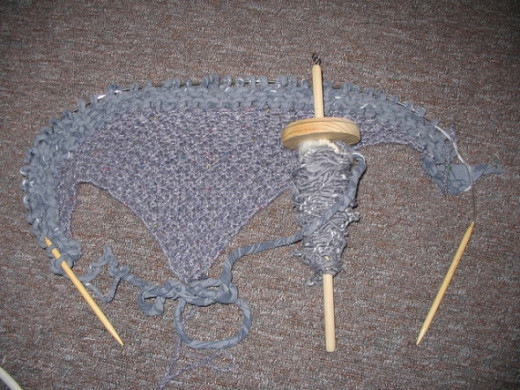
Knitting with Spun Fabrics
Click thumbnail to view full-size

Opposite you can see what my wall hanging ended up looking like.
I love the way the piece goes in and out and gets wider and narrower depending on the thickness of the yarn.
In these images you can also see how the use of different stitches - purls and knits can make structure from a flat piece of knitting.
Do bear in mind though that the thick yarns and fabrics can get very difficult to knit with.
Knitting Fabric Strips
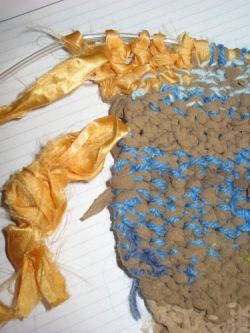
Lengths of fabric strips (sometimes called strippons) can be added into your knitting.
The pieces shown opposite and below were cut from a piece of yellow satin.
You can see from the images that this fabric is fraying slightly but this can all add to the effect.
I'd love to experiment with knitting up some fabric that's completely fraying and falling apart - intentionally frayed fabric could even be spun up with some yarn to make an interesting textured cord to knit with.
To give your fabric a little bit of stretch try cutting the strips on the bias.
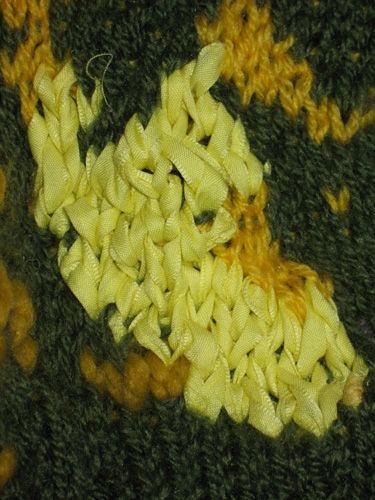
Knitting with Ribbons
In the image opposite I've used a length of ribbon into the middle of my knitted piece.
If you can't stand the sight of frayed fabric then ribbons may be good for you as their edges are already finished.
You knit them just the same as you would any other piece of fabric strip - being careful to not knit them too tightly.
Knitting Plastics
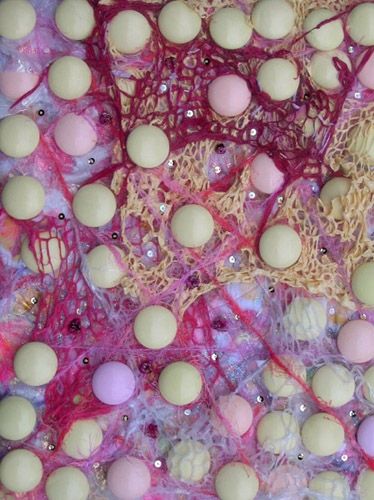
I've knitted strips of plastic ever since a recycling project we did years ago when I was still in school.
Once I got into melting fabrics I realized that I could also melt plastics.
When you knit plastics up you can heat them and stretch them to make amazing webs to add over your craft pieces.
Please be aware of toxic fumes however and work in a well ventilated space and wear the appropriate mask. Also, don't set fire to yourself! Health and Safety Message over!
In the image below I've stretched different colored knitted, melted plastic webs over textiles and plastic bottle tops.
Sewing into Your Knitting
Coming Soon.
My next adventure is sewing into my knitted wall hangings.
I've been thinking about sandwiching my knitting between two layers of sheer organza so that I can sew the piece with the sewing machine.
Embroidery can be used to highlight particular knit stitches, add pictures and colors.
I'm thinking of adding in the image of a girl on my Riders of Rohan piece (shown further up this page).
I'll be back to add photos of my experiments when I'm done.

